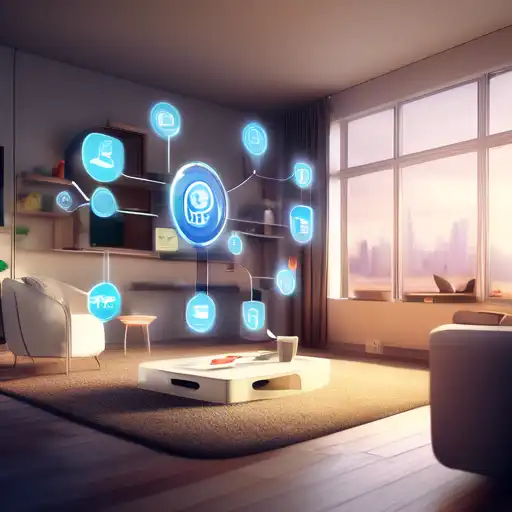Introduction to Smart Home IoT Devices
The Internet of Things (IoT) has transformed the way we live, offering unprecedented convenience and efficiency in our daily lives. Among the most significant impacts of IoT is the evolution of the smart home, where devices communicate with each other to automate tasks, enhance security, and improve energy efficiency. This article explores the top IoT devices that are making homes smarter and more connected than ever before.
1. Smart Thermostats
Smart thermostats like the Nest Learning Thermostat and Ecobee SmartThermostat learn your schedule and preferences to optimize heating and cooling, reducing energy bills and environmental impact. These devices can be controlled remotely via smartphone apps, making it easy to adjust your home's temperature from anywhere.
2. Intelligent Lighting Systems
Lighting systems such as Philips Hue and LIFX allow homeowners to control lights remotely, set schedules, and even change colors to match moods or occasions. These systems not only offer convenience but also contribute to energy savings by ensuring lights are only on when needed.
3. Smart Security Cameras and Doorbells
Security is a paramount concern for homeowners, and IoT devices like Ring Video Doorbell and Arlo Security Cameras provide peace of mind with real-time alerts, live video feeds, and two-way communication. These devices can deter potential intruders and provide valuable evidence in the event of a security breach.
4. Smart Locks
Smart locks, such as those from August and Schlage, offer keyless entry, remote access control, and the ability to grant temporary access to guests. This eliminates the need for physical keys and enhances home security by allowing homeowners to monitor and control access to their homes from anywhere.
5. Smart Plugs and Switches
Devices like Wemo Smart Plug and TP-Link Kasa Smart Wi-Fi Plug turn ordinary appliances into smart devices. They can be controlled remotely, set on schedules, and even monitored for energy usage, making them a simple yet effective way to start building a smart home.
6. Smart Kitchen Appliances
The kitchen has not been left behind in the smart home revolution. Appliances like the Samsung Family Hub Refrigerator and Instant Pot Smart WiFi offer features such as inventory tracking, recipe suggestions, and remote cooking controls, making meal preparation more convenient and efficient.
7. Smart Home Hubs
For those looking to integrate multiple smart devices, hubs like Samsung SmartThings and Hubitat Elevation serve as the central nervous system of the smart home, allowing different devices to communicate and work together seamlessly.
Conclusion
The integration of IoT devices into our homes is making them smarter, safer, and more energy-efficient. From smart thermostats and lighting systems to security cameras and kitchen appliances, the possibilities are endless. As technology continues to evolve, we can expect even more innovative solutions to emerge, further enhancing the convenience and efficiency of our living spaces. Embracing these technologies not only improves our quality of life but also contributes to a more sustainable future.
